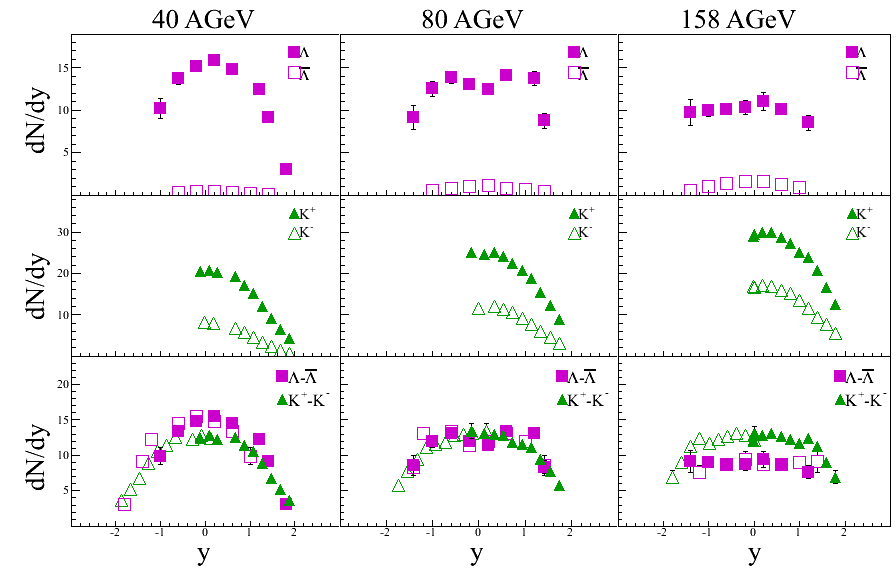Date: Thu, 13 Aug 2009 10:23:03 +0200
Dear Michael, I have tried to play with these things from another angle once (following chemical ideas of BRAHMS, you, and others) that might be useful. If you would have chemical equilibration at each rapidity you would expect: K^+-K^- ~ Lambda - Lambda-bar If I look at NA49 data this does not seem so bad an estimate, see attached plot (there is one of the data sets where the centralities are not the same for Ks and Lambdas as I remember). It might not help you to get p/Lambda (or the pT dependence - I think Flemming has done some work on this), but it might give some cross check:-) Cheers, Peter On Wed, 2009-08-12 at 17:15 -0500, Michael Murray wrote: > Dear Casper, > BRAHMS has found that the strange chemical > potential m_s = 0.28 +- 0.04 * m_q > Since lambda is like a proton that has an up quark changed to a > strange quark then lambda/p is proportional to exp (mu_s - mu_q) = > exp (0.72 mu_q) or (pbar/p)**0.12 > > Given the change of pbar/p from 0.75 to 0.23 from y=0 to y=3.1 I find > that the lambda/proton ratio should decrease by a factor of 0.86+-0.02 > > The antilambda/antiproton ratio should INCREASE by this factor. > > This seems like a reasonable estimate for the overall change in the > ratio. I will work on the Pt dependence next. > Michael > > > > _______________________________________________ > Brahms-l mailing list > Brahms-l_at_lists.bnl.gov > https://lists.bnl.gov/mailman/listinfo/brahms-l > -- Peter Christiansen Email: peter.christiansen_at_hep.lu.se Phone: (+46) 046-2227709 Address: Lund University Department of Physics Div. of Experimental High-Energy Physics Box 118 SE-221 00 Lund Sweden _______________________________________________ Brahms-l mailing list Brahms-l_at_lists.bnl.gov https://lists.bnl.gov/mailman/listinfo/brahms-l
